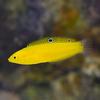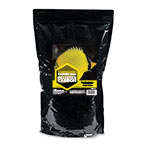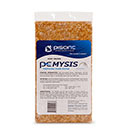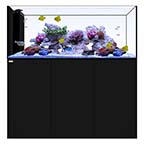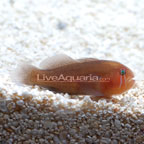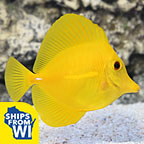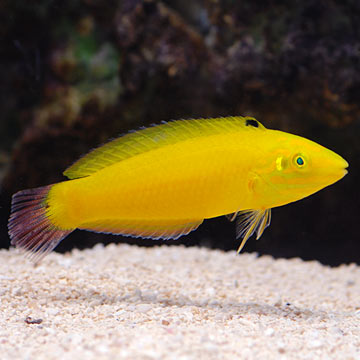
Additional locales and sizes may be available!
Additional locales and sizes may be available! Email me when availableQuick Stats
What do these Quick Stats mean? Click here for more information
What do these Quick Stats mean? Click here for more information
Overview
The natural range of the Yellow Wrasse is concentrated in the Eastern Indian Ocean, extending into the Western Pacific Ocean including the Solomon Islands and north to Southern Japan and as south to Rowley Shoals and the Australian coast of New South Wales. The Yellow Wrasse is a reef-associated species, typically found at the reef edge in sand and rubble zones.
The ideal setup for the Yellow Wrasse will be a well-established saltwater aquarium of at least 50 gallons in size with a tight-fitting lid. To best recreate a natural reef environment for your Yellow Wrasse, aquascape liberally with live rock, providing ample nooks and crannies for your Yellow Wrasse to explore, seek refuge, or forage for food. Be sure to include a large area of open substrate as well as open spaces for swimming. A sandy substrate layer 2-3 inches in depth is essential to provide shelter for the Yellow Wrasse as it burrows into the sand for the evening or when frightened. House the Yellow Wrasse with other peaceful wrasses, including members of its own species.
The natural diet of the Yellow Wrasse consists of benthic invertebrates and as such, large, hungry Yellow Wrasse will eat fireworms and pyramidellid snails, protecting corals and clams from these undesirable invertebrates. Though this hearty appetite for invertebrates seems beneficial, keep in mind that the Yellow Wrasse cannot differentiate between "undesirable" and "desirable" invertebrates. If the opportunity presents itself, the Yellow Wrasse will most likely make a meal of "desirable" ornamental invertebrates including fan worms, shrimp, and other crustaceans in the home aquarium. However, the Yellow Wrasse typically will not harm sessile invertebrates including soft or stony corals.
In the home aquarium, the diet of the Yellow Wrasse should consist of a diverse variety of food items including vitamin-enriched frozen mysis shrimp, vitamin-enriched frozen brine shrimp, and other meaty foods along with high-quality marine flakes and marine pellet foods. The Yellow Wrasse will benefit from frequent small feedings throughout the day.
Approximate Purchase Size: Small: 1-1/2" to 3"; Medium: 3" to 4"; Large: 4" to 6"



